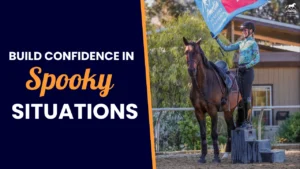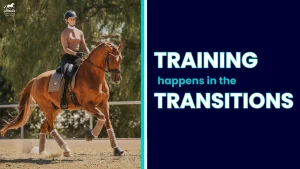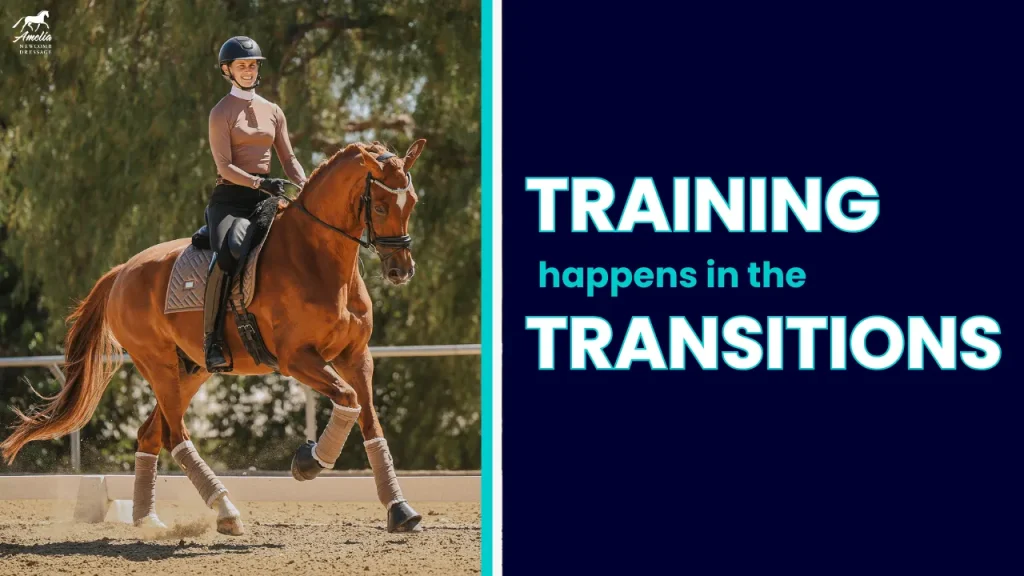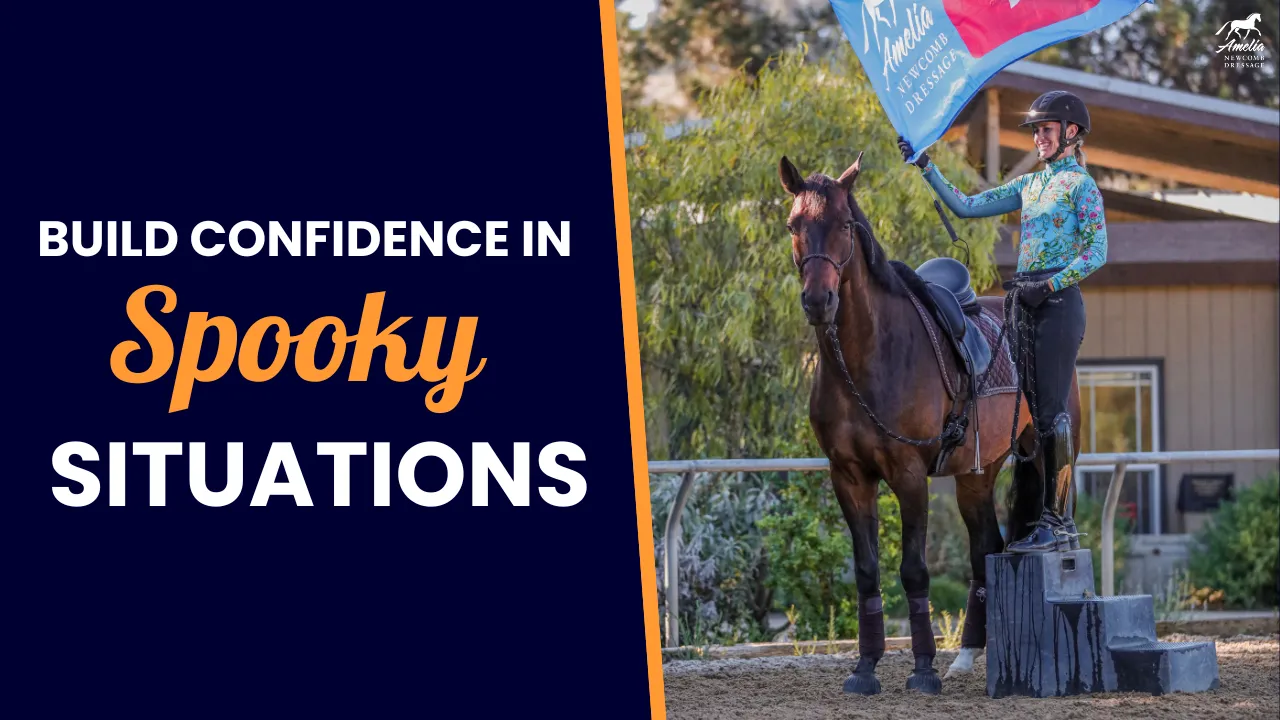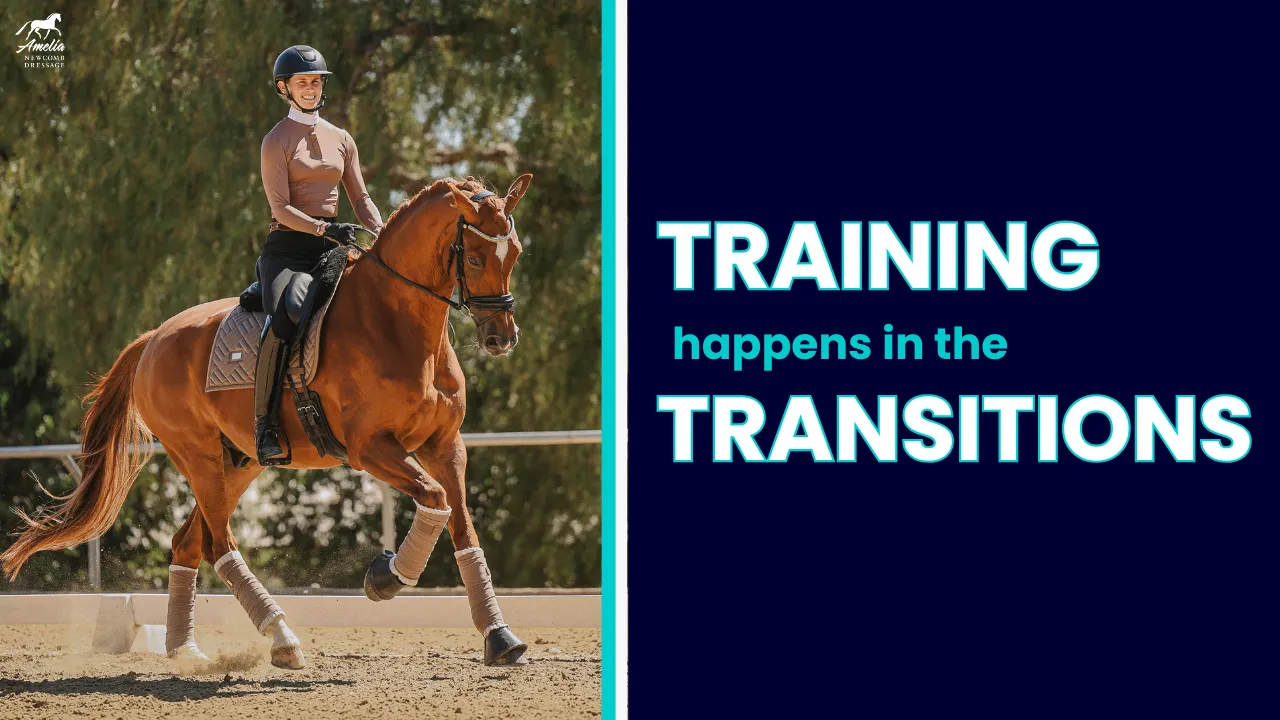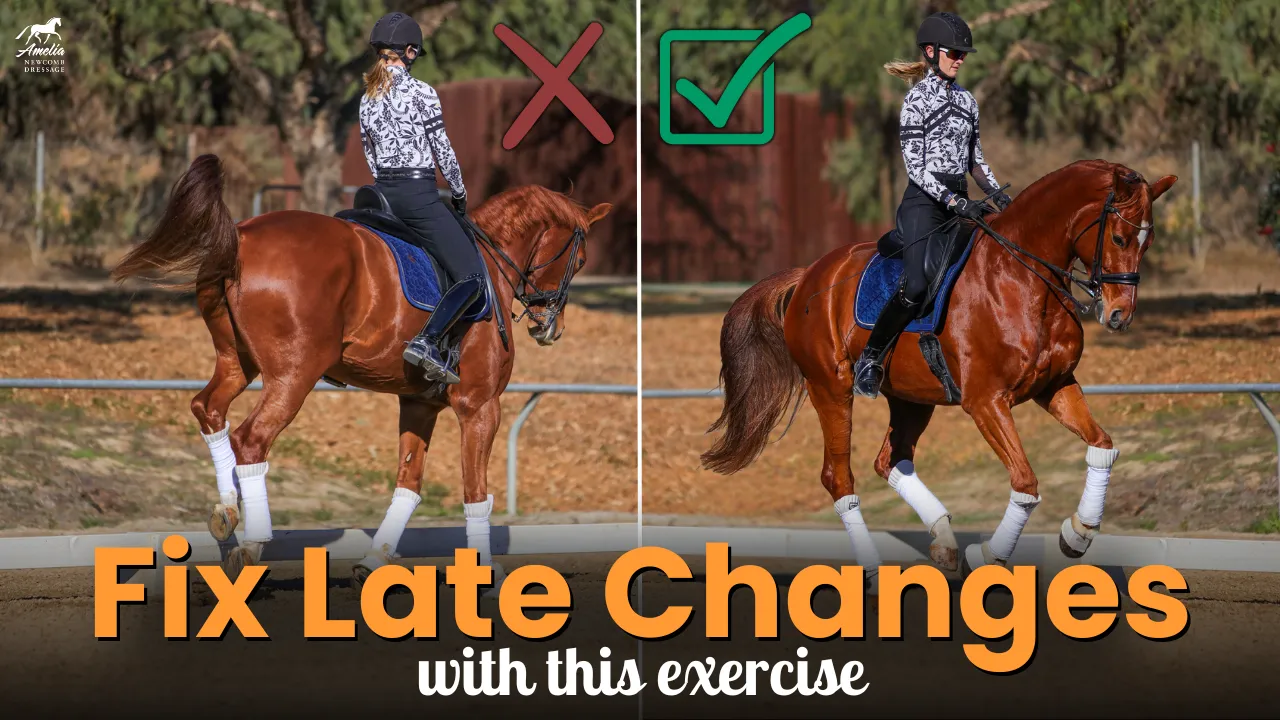If you’ve ever struggled with a horse that likes to break out of the canter, you’re not alone. Horses may break out of the canter due to a loss of balance, reluctance to move forward, or it can just be a bad habit. Either way, it is important to understand why your horse is breaking out of canter and how you can fix the issue.
In this video, my husband, Germán, is riding Elior and demonstrating how to help him maintain the canter and stay responsive to the aids. Elior had a prior career before joining us as a jumper, and has a habit of breaking out of the canter. Unlike younger or less experienced horses that typically break due to a loss of balance, Elior sometimes decides he doesn’t want to canter. This presented an interesting challenge, requiring a different approach and a special exercise to encourage forwardness and consistency.
The first rule in maintaining any gait, especially canter, is to ensure your horse is in front of your leg and that you’re not nagging or over-aiding your horse. When Elior breaks gait, it’s because he is not in front of the leg.
To balance getting Elior in front of the leg while maintaining control, Germán rides a pattern that combines the lengthening on the long side with 15-meter circles. Here’s how this exercise works:
- Lengthen on the Long Side: This sends the horse forward, encouraging energy and impulsion.
- Circle for Balance: The 15-meter circle helps bring the horse back, requiring them to shift their weight onto their hindquarters and balance themselves.
- Repeat as Needed: By alternating between these two movements, the horse begins to understand the balance between going forward and staying connected.
Repetition is key when teaching a horse not to break. As Elior becomes more familiar with the exercise, he starts to anticipate (in a good way) and adjust his balance without as much input. Over time, the exercise helps him maintain a more consistent frame and connection from back to front.
When Elior breaks gait without being asked, it’s important that it’s immediately addressed. Allowing a horse to break and then regrouping later teaches them that breaking is acceptable. Instead, you’ll see Germán “fix it on the fly,” rebalancing and asking for canter again without delay. Please note that if you have a young or sensitive horse, you may be better off to regroup and organize before asking to canter again.
When working on transitions, it’s crucial to prioritize quality over precision. While dressage tests may require transitions at specific markers, focusing first on executing smooth, balanced transitions ensures long-term success. Once the quality is there, you can work on hitting the exact spots in the arena.
By focusing on forwardness, balance, and consistent aids, you can help your horse understand and maintain the canter. Remember, every ride is an opportunity to teach your horse, so be mindful of the lessons you’re imparting—intentionally or unintentionally. If you found this helpful, be sure to try these exercises during your next ride.
Happy Riding!
Amelia
P.S. Need more help getting your horse responsive and on the aids? Check out my Free PDF all about the Training Scale and how to plan and structure your rides so that you can make progress and have more fun with your horse! Download the Free PDF here.

